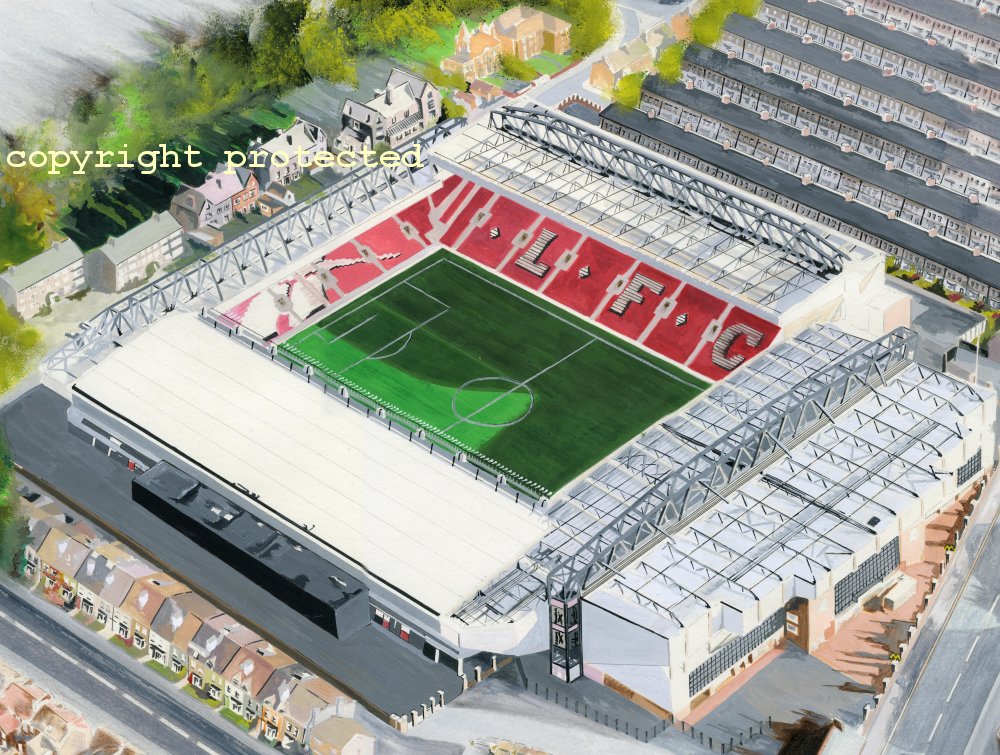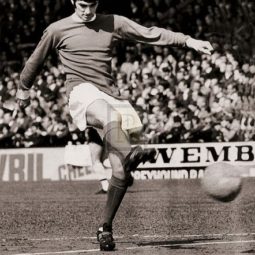Description
Click on Image to view a larger version
Anfield (Liverpool FC stadium)
Information
Name: Anfield
Club: Liverpool FC
Inauguration: 1884
Capacity: 45,400 seats
Pitch Dimensions: 110*75
Record Attendance: 61,905; Liverpool-Wolves, 2 February 1952
Address: Anfield Road, Liverpool, L4 0TH
Stadium Pictures
Picture 1 Picture 2 Picture 3
Picture 4 Picture 5 Picture 6
History and Stands
Anfield is a football stadium in the district of Anfield, in Liverpool, England. It is the home of Liverpool F.C..
The stadium was built in 1884 on land adjacent to Stanley Park, and was originally inhabited by Everton F.C.. They were founder members of the Football League in 1888, but left the ground in 1892 over a rent dispute, and moved into the newly-built Goodison Park, less than a mile away. Anfield’s owner, John Houlding, decided to form a new club to play at the ground, which became Liverpool. The two clubs became traditional rivals, and are both among the most successful English teams.
In 1906, the banked stand at one end of the ground was renamed the Spion Kop, after a hill in Natal that was the site of a battle in the Second Boer War, where the British forces suffered heavy losses. Many other football grounds, such as St Andrews, Birmingham and Hillsborough, Sheffield, adopted the name of “Kop” for one of their stands, but it was the Anfield Kop that became most synonymous with the name. At its largest, the stand could hold 28,000 spectators, and was one of the largest single tier stands in the world. Local folklore claimed that the fans in the Kop could “suck the ball into the goal” if Liverpool were playing towards that end. The stand was considerably reduced in size due to safety measures brought in following the 1989 Hillsborough disaster, and it was completely rebuilt as an all seater stand in 1994, although it is still a single tier. The current capacity is 12,409.
The other stands are:
* Main Stand – erected in 1895 and more or less unchanged to the present day, with a capacity of 12,277.
* Centenary Stand – known as the Kemlyn Road stand until it was expanded for the club’s centenary in 1992, with a capacity of 11,762.
* Anfield Road Stand – rebuilt in 1998, with a capacity of 9,074, including the away fans section.
The ground incorporates several notable features, including a memorial to the 96 fans who died in the Hillsborough disaster. There is a statue of Bill Shankly, as well as a pair of gates at two entrances to the stadium, the Shankly Gates and Paisley Gates, named after Shankly and his successor Bob Paisley. Floodlights were installed in 1957.
“Fortress Anfield” gained a reputation as one of the most difficult grounds for visiting teams. Manager Bill Shankly, who engineered the club’s dominance of English football in the 1970s and 80s, had a sign proclaiming “This Is Anfield” mounted on the wall above the exit from the players tunnel, to intimidate the opposition. Many of the Liverpool players reach up and touch the sign as they pass underneath it for good luck.
Due to the difficulties of expanding Anfield beyond its current boundaries (an entire terraced street had to be demolished to make way for the Centenary Stand expansion), Liverpool are expected to leave the ground in the next few years, and have submitted plans for a new stadium within Stanley Park. If successful, the existing location will be redeveloped for the local community.
The new stadium was suggested to be shared with local rivals Everton F.C., subject to planning approval, but this is looking increasing unlikely.
Pitch
Pitch size: 110 x 75 yards
Records
Record Attendance: 61,905 v Wolverhampton Wanderers (FA Cup 4th Round, February 2nd, 1952).







